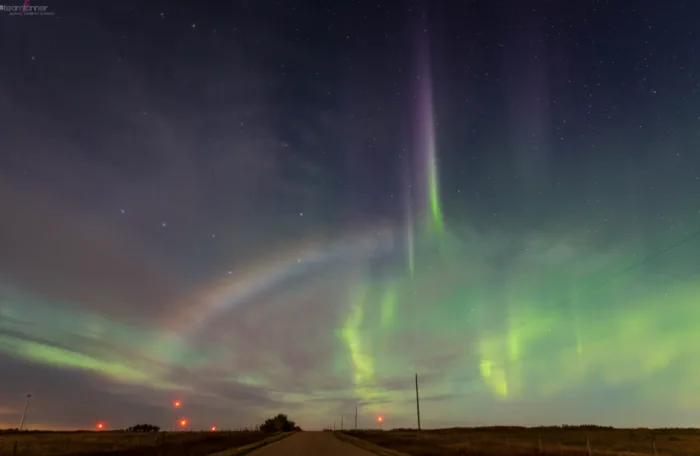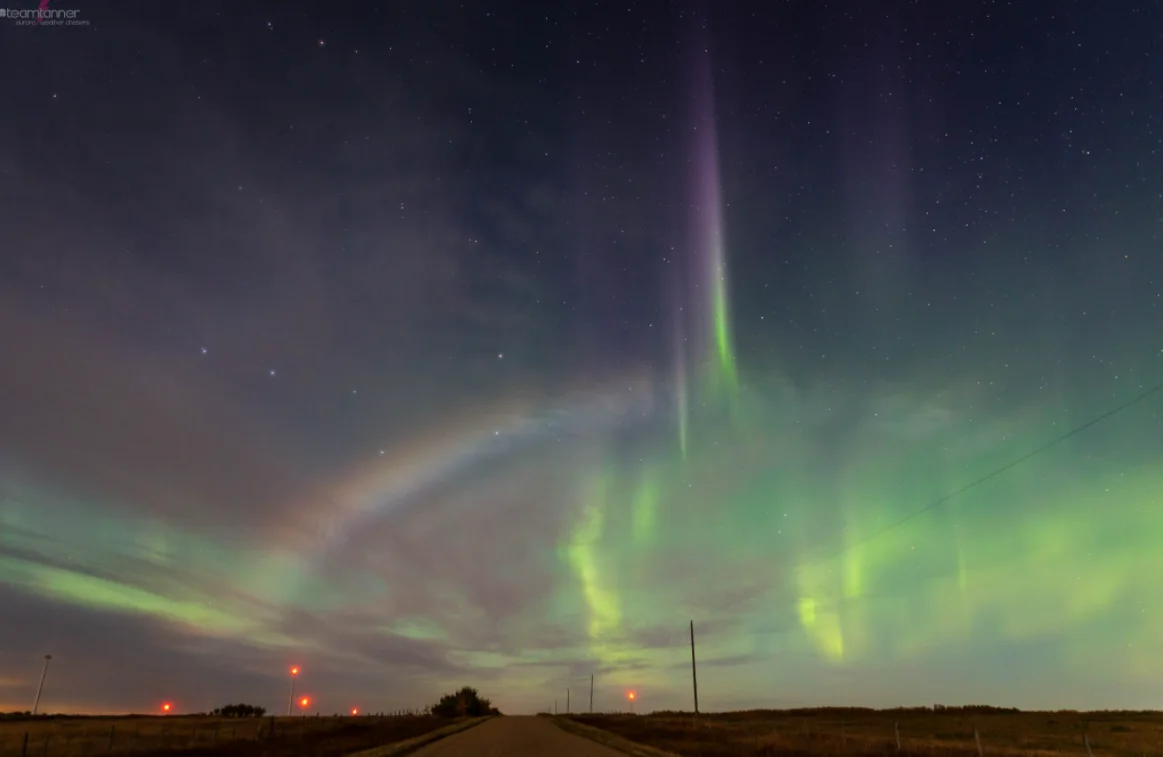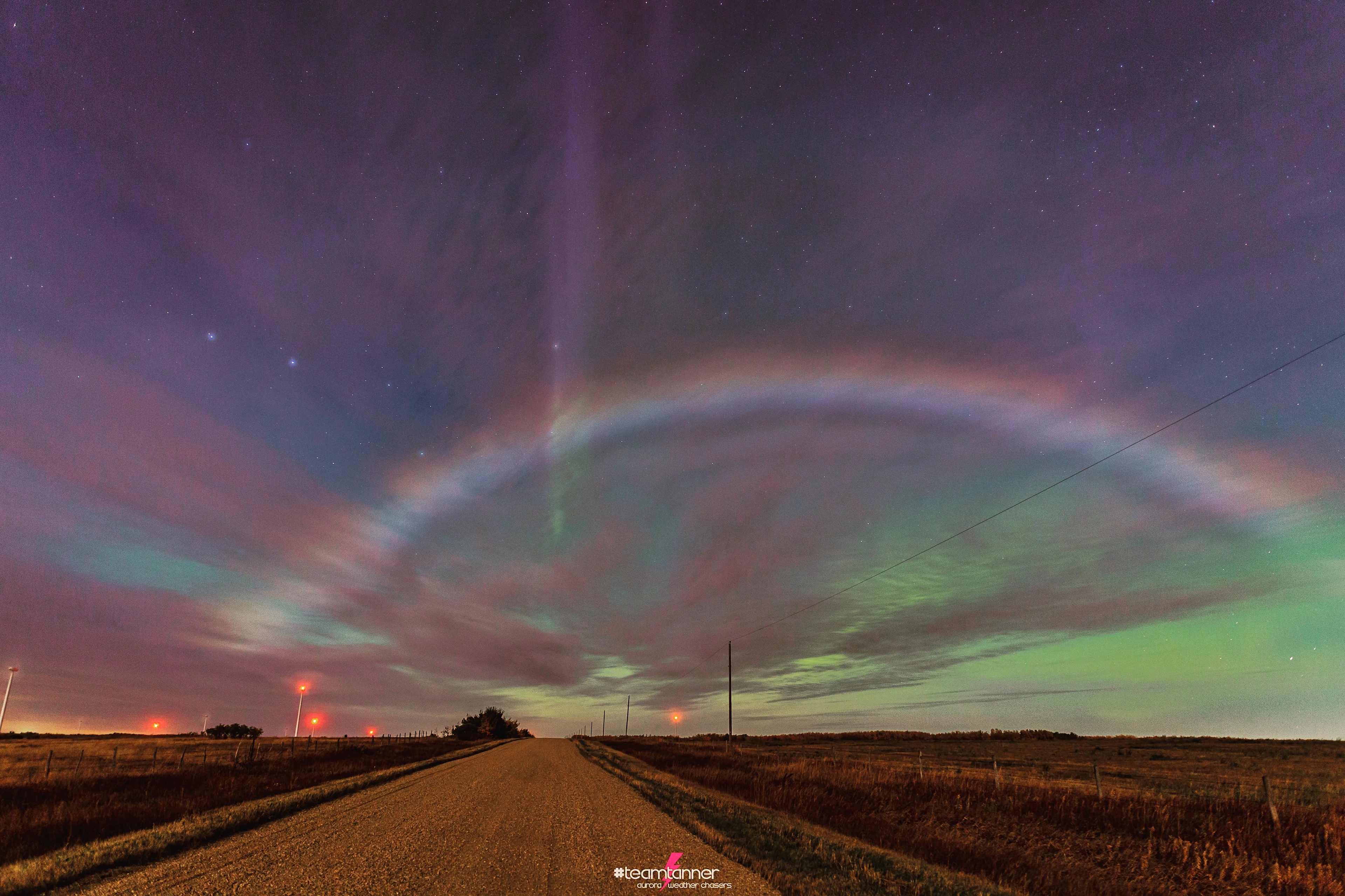
Rare shot of a moonbow and auroras from Alberta goes viral
It's a picture-perfect pair, and a rare one at that.

Courtesy: Theresa and Dar Tanner
Sky-watchers in southern Alberta were treated to a spectacle Sunday night, with bright auroras dancing across the sky.
And that's not all.
One image -- featuring an elusive 'moonbow' alongside the auroras has gone viral.
"A moonbow is, essentially, a lunar rainbow which is seen at night, as the light from the Moon is backscattered by water droplets or raindrops," explains Weather Network science writer Scott Sutherland.
"Basically, moonlight is entering one side of a water droplet or raindrop, it is refracted off the inside surface of the opposite side of that droplet or raindrop, so that it exits out of the droplet or raindrop back in the direction from where it came, and then it is picked up by our eyes (or a camera)," he writes.
This particular moonbow was captured around 11:15 p.m. Sunday in Castor, Alberta by Theresa and Dar Tanner.
Here's another shot, taken on the same night by the Tanners:

According to Theresa and Dar, auroras aren't common in the area.
"In our eight years chasing the aurora we have never seen a moonbow," they tell The Weather Network in an email.
"With the equinox, we should start to see more aurora activity, and also the nights are getting darker, making it easier to see them."
The Tanners are seasoned aurora chasers. Their plans to fly to Yellowknife in September were cancelled due to COVID-19, but last year the pair travelled to Iceland to chase the lights.
Their one tip of advice for aurora watchers?
"Be patient, very patient. It will pay off once you see the lights dancing!"
It also doesn't hurt to monitor the weather for optimal viewing conditions. The Tanners say they use the Weather Network app (available on Android and for iOS), alongside the space weather live app and solarham.net for auroral conditions.
VIDEO: SEE MORE OF DAR AND THERESA'S INCREDIBLE SHOTS
WHAT CAUSES THE NORTHERN LIGHTS?
Northern lights -- or aurora borealis -- occur when solar particles collide with the Earth's atmosphere. Their colour variety results from the presence of different types of gas particles in the atmosphere as well as the wavelength of light that's emitted, according to NASA.
Two of the most common elements in the Earth's atmosphere -- oxygen and nitrogen -- create different types of northern lights. Oxygen is responsible for green and yellowish-green auroras. Blue, purple and reddish-purple auroras are rare in comparison. They're created with the help of nitrogen.










